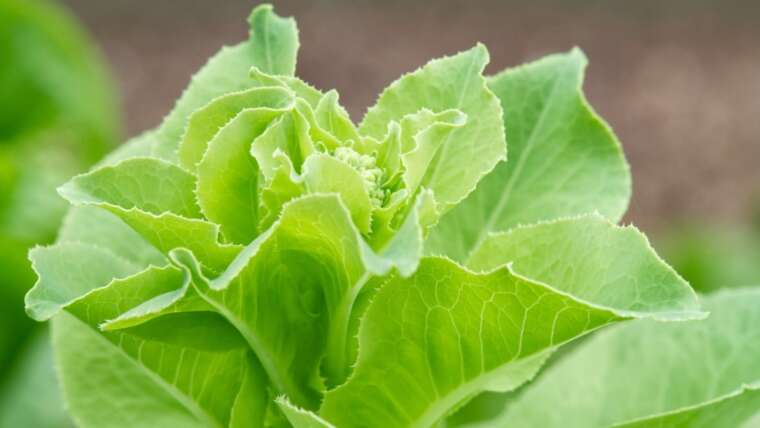Lovely poinsettias take a starring role in holiday decorating. These flashy and flamboyant flowering plants are synonymous with holiday cheer.
If you’re a gardener, you’ve probably wondered whether these plants should be moved outdoors and planted in the ground after the holidays. If you’ve ever left one outdoors during a cold snap, you likely already know that cold weather is not a poinsettia’s friend.
So, what is the best way to care for these plants after the bold foliage fades away? Let’s discuss whether poinsettias can grow outdoors in your climate and how to care for them either way.
The Short Answer
Yes. Poinsettias can grow outdoors year-round in climate zones 9-11. In cooler climates, they need to be brought indoors when the temperature falls below 50°F, or they will suffer damage to their foliage.
The Long Answer
Knowing a plant’s native climate is crucial for successful outdoor growth.
Under the correct conditions, all plants can be grown outdoors – they all evolved there, after all! Knowing the native climate conditions is the first step in determining whether or not you can grow it outdoors.
Poinsettias are native to tropical Central America, where the climate is typically warm and humid, rarely experiencing freezing temperatures. They are an understory plant, so they prefer bright but indirect sunlight for maximum growth and flowering.
These factors make poinsettias good houseplants in most places, but how do they stack up as outdoor plants? Poinsettias can live outdoors year-round in zones 9-11, but if you live north of zone 9, you must bring them indoors for at least a portion of the year. Let’s discuss growing these plants in tropical and non-tropical climates.
Growing Poinsettias in a Tropical Climate
 In zones 9-11, poinsettias can easily grow outdoors but require protection from wind, well-drained soil, and proper lighting.
In zones 9-11, poinsettias can easily grow outdoors but require protection from wind, well-drained soil, and proper lighting.
It seems strange that these plants that we associate with the winter holidays are warm-weather plants, but it’s true.
In USDA zones 9-11, poinsettias can be grown outdoors in the ground all year. When choosing a spot for your poinsettias in the garden, consider a few factors if you want to give them the best chance at blooming again next year.
Poinsettias can grow up to 15 feet tall in the ground. As they get larger, their stems will become woody and strong. However, the tender new growth of this plant has delicate stems that snap and break easily. Giving your poinsettias protection from the wind is an important part of choosing a site for your plants to grow.
Poinsettias like for their soil to be moist but not soggy. Ensure the soil has good drainage and that they are located where you can easily give them supplemental water in the summer. When the bracts fall off, fertilize your poinsettia with a balanced fertilizer. Repeat this every three weeks to a month throughout the growing season until the plant blooms again.
Light
Light is very important if you want to see your plant bloom again next year. The colorful leaves on a poinsettia that we associate with flowers are actually not the true flowers of this plant. Poinsettia flowers are small and yellow and appear at the ends of branches. The colorful parts are modified leaves called bracts.
If a poinsettia is to bloom and produce these colorful bracts, it has to have the right lighting conditions. The shortened daylight hours trigger the blooming response in these plants, so there must be a perceptible shift. They also need to have a long period of complete darkness to initiate blooming.
Plant your poinsettias in a spot where they receive bright but indirect light all day. They don’t like direct sun, but they do need quite a bit of light, so give them the protection of trees or other large shrubs. It would be best if you also planted them away from artificial light sources, which could disrupt the dark period they need to bloom.
Even artificial light can interfere with the blooming process. To bloom, your poinsettias need 14-16 hours of darkness daily before the bracts begin to change color.
Growing Poinsettias Outside of a Tropical Climate
 Plant poinsettias in pots in cooler climates, as ground planting risks frost damage.
Plant poinsettias in pots in cooler climates, as ground planting risks frost damage.
Since these are tropical plants, putting them in the ground in cooler climates is not a good idea, as a hard freeze will kill the roots. A light frost will only damage the foliage of the plants, but if the ground freezes, you will lose the plant altogether.
Climate Considerations
Poinsettia’s foliage will suffer when consistently exposed to temperatures below 55°F.
I live in zone 8, and I’ve left poinsettias outdoors over the winter, even planting some in the ground. Some of their roots have survived to see another year, but last year, after a hard freeze, they died off completely. If you live north of zone 9, planting your poinsettias in pots rather than in the ground is best.
Potted Poinsettias
Potted poinsettias won’t grow quite as large as those in the ground, but they can grow to a decent size if their needs are met. If you play it right, you can still get these plants to bloom again each year. The key is the care and amount of light your plant gets, so be intentional about exposure.
Poinsettias are fast growers, and they don’t benefit from being root-bound. Give them a pot that they can grow into. Size up from the nursery pot, giving your plant at least two to three inches on all sides. Use potting soil that holds some moisture, but ensure that your container and soil drain well, as these plants are susceptible to root rot.
As with outdoor poinsettias, you will have a healthier plant if you fertilize regularly. Poinsettias in containers should be fertilized every two to three weeks through their active growing stage. While the plant is blooming, it doesn’t need to be fertilized, but as soon as the bracts fall off, fertilize with a balanced, all-purpose fertilizer and repeat every two to three weeks.
Your best bet for getting a potted poinsettia to bloom again is to move it outdoors for the warmer months. This ensures that the plant gets enough sunlight hours and will feel a perceptible shift when the daylight hours shorten in the fall.
This shift in light triggers blooming, so it is vital to ensure this happens. It can be tricky if you live in a climate where you experience an early frost, but it can be done. Let’s talk about transitioning your poinsettia indoors for the winter in a way that will induce blooming.
How to Transition a Poinsettia Indoors for the Winter
 In colder climates, ensure darkness indoors for six weeks to induce blooming.
In colder climates, ensure darkness indoors for six weeks to induce blooming.
If you live in a milder climate, like zones 7-8, you probably don’t get a freeze until well into November. This means that you can leave your poinsettias outdoors long enough for nature to do its thing. The natural shortening of daylight hours will indicate to your plant that it is time to bloom, and you can simply move the plant indoors once this shift has occurred.
If you live in a colder climate, you may have to bring your plant in before it gets enough hours of darkness to trigger blooming, so you must help it along. This means that it must be in complete darkness for 14-16 hours for six weeks when you move it indoors.
This can be a bit high maintenance, but it will work if you do it correctly, and you’ll have the satisfaction of a blooming tropical plant in a non-tropical climate. Not to mention, those bracts certainly are beautiful. Once the six weeks have passed, you can move your plant to whatever space you like, and the blooming process will continue.
In the spring, wait until the temperature outdoors is around 55°F before moving your plant back outside. Keep it in a spot with bright but indirect sunlight for as many hours as possible each day.
Final Thoughts
Growing a poinsettia outdoors is simple enough in warm, tropical climates. As long as they get enough water and indirect sunlight, they should thrive and bloom year after year. In colder climates, expect to have to put more effort into your poinsettias, but don’t get discouraged if your plant doesn’t bloom in its second year. As long as your plant survives, you can try again next year.




